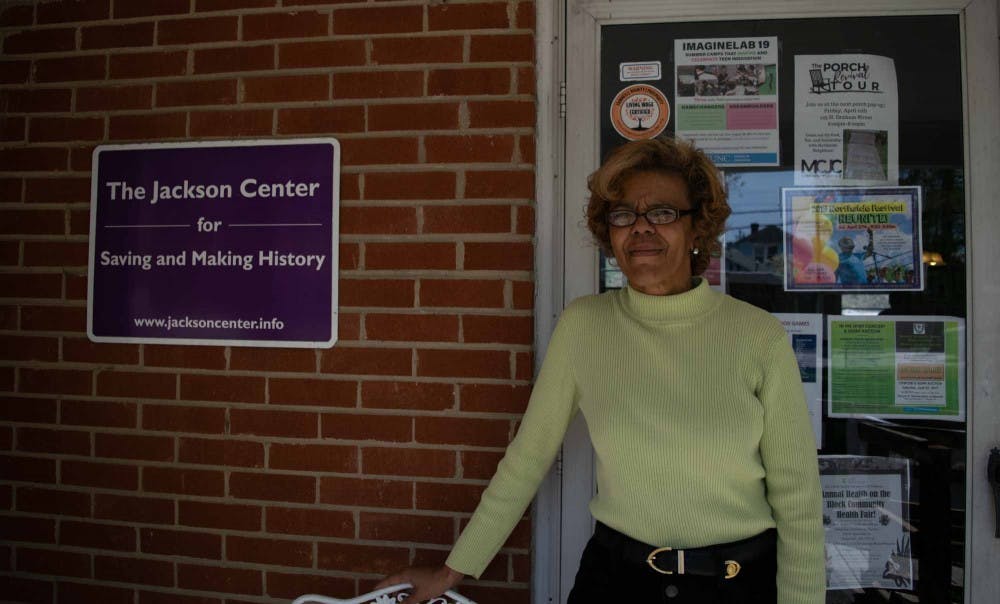Sarah Viñas, assistant director of Housing and Community for the Town of Chapel Hill, said students living off campus can make it difficult for other residents to afford to stay in the area.
“We have affordability challenges in Chapel Hill, and it's a really tight housing market,” Viñas said. “There's limited options available. So I think students definitely do play a role in contributing to that challenge.”
Chapel Hill’s Northside community, which includes areas north of Rosemary Street and east of Martin Luther King Jr. Boulevard, is particularly an area of concern for the Town as students continue to move into houses in the neighborhood.
Historically the largest African-American community in Chapel Hill, Northside has seen a decline in the number of African-American residents. In 1980, the neighborhood had over 1,100 Black residents. By 2010, that number had declined to 690, according to the U.S. Census.
Due to student interest in living in the area, landlords can rent properties in Northside for more than a family can afford, according to the Town of Chapel Hill's website.
Kathy Atwater, community advocacy coordinator at the Marian Cheek Jackson Center, said many retired residents rely on a fixed income and that increases in property tax can be difficult to afford.
A 2017 Daily Tar Heel article cited Orange County as having the highest property tax rate in North Carolina.
The Jackson Center offers property tax support in order to help long-term residents stay in the community.
“I would like to see if there are more apartments coming that would be more affordable for residents and for seniors, because that's the population now that really needs places to live,” Atwater said.
Keith Edwards, a lifelong resident of Northside and community advocate, writes a column called “Ask Keith” in The Northside News answering questions about household and community issues.
She said she thinks Northside seems to be losing its family focus as more students move into the area and feels more like fraternity row.
“I try not to think about it because sometimes it gets too depressing, because I remember how nurturing the Northside community was to the African-Americans living in Chapel Hill,” Edwards said.
To get the day's news and headlines in your inbox each morning, sign up for our email newsletters.
At the heart of that nurturing was the Hargraves Community Center, Edwards said. It was the first social and recreational facility for African Americans in Chapel Hill, according to the Town's website.
“In my day, the community center was just packed with kids,” Edwards said. “... It was a vibrant, growing community.”
He hopes students who choose to live in Northside will help maintain a child-friendly environment.
Taylor Phillips, a student resident in Northside, moved into the neighborhood because it was cheaper than a single room in an apartment. She wanted a room to herself, access to a kitchen and close proximity to Franklin – Northside offered all three.
But Phillips is uncertain how to find the right balance of community involvement.
“I feel like every once in a while I see a lot of signs around the community for community dinners and events going on,” Phillips said. “And sometimes when I see those and I feel like, ‘Oh, I don't know if that would be intrusive,' just because there are other people living here who are not students, and I feel like the community belongs to them.”
While Phillips tries to find her place in the community among local residents, she said she also sees value in students’ presence.
“I think students need somewhere to live, and the community needs the University to exist to be successful,” Phillips said.
The Town of Chapel Hill, the University and community partners, like the Jackson Center, try to ensure positive interactions between students and other members of the community with initiatives like the Good Neighbor Initiative.
The Good Neighbor Initiative is an attempt to integrate students into the community by educating students about local ordinances, rules and regulations such as trash pickup, parking and home safety.
The struggle to educate students is ongoing, since most are a transient population within Chapel Hill. Once students acclimate to the community, they often leave and new students come into homes and apartments to take their place.
“I think as long as we keep along that line — keep working toward looking at evidence where we all live together, work together, play together and be in harmony with one another — I think that it will return to being a great neighborhood to live in for sure,” Atwater said.
@JessySnouwaert
university@dailytarheel.com



